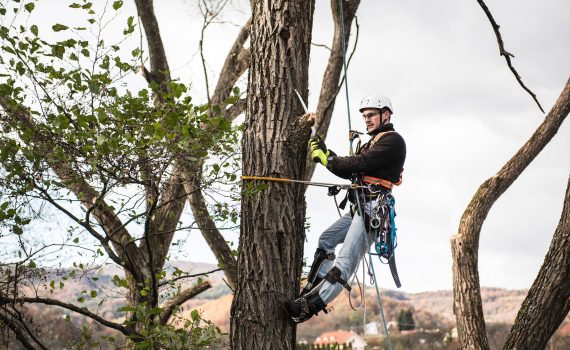Keeping trees and shrubs in good condition involves regular tree care and pruning to maintain their health, and to keep them under control. Tree pruning helps to conserve a tree’s energy, manage its size and change its shape. But can pruning a tree actually change a tree’s growth?
Benefits of Tree Pruning
Tree pruning can help to keep your trees neat and tidy and is an essential service that can be offered by a qualified arborist. Pruning can remove dead or diseased branches, thin canopies, change the shape of tree canopies and improve fruit crop. Having your trees trimmed regularly is essential for optimum tree health.
Pruning Effect on Canopy Growth
Pruning both immediately changes the characteristics of the canopy and impacts growth within the canopy. Because the leaves are the energy and food producing centers of a tree, pruning live tissues will always have an impact on growth. However, pruning dead tissues and branches simply clears them away, without impacting growth.
Skillful pruning by an experienced arborist can help to control the size and shape of your canopy. The more that outer growth and primary branches are pruned back, the more growth will be concentrated on smaller branches close to the tree. This can produce tight dense canopies. For optimal tree health, canopies that allow sunlight and air to filter through can be more beneficial. By pruning marginal branches and leaving active leader branches, your arborist can help you promote trees with healthy growth along the strongest branches, resulting in a large and dispersed canopy.
Pruning Effect on Root Growth
Any pruning of living tissue will affect root growth to some extent. Pruning back active branches diminishes a tree’s ability to produce food, so there will be less root growth. Care should be taken not to ‘top’ trees when pruning to reduce root growth, as this can eliminate any opportunity for the tree to produce food, resulting in tree death.
While pruning may help to slow root growth, it shouldn’t be counted on as a way to control root growth. If you require the trees in your garden to have non-invasive root systems, it’s better to choose tree and shrub varieties that have non-invasive roots naturally.
Pruning Effect on Fruit Growth
Pruning trees skillfully can actually help to produce larger fruit in a greater quantity. Pruning trees in late winter, removing small secondary branches, can help to focus resources and energy on the major branches that will bear fruit. Fruit can grow larger, and in greater amounts, when energy is being diverted directly into fruit production rather than generating new leaves or branches in spring or summer. However, pruning trees to promote fruit growth is a careful process that requires skill to execute correctly. Talk to your local arborist about pruning your fruit tree to yield a bumper crop.
Skillful pruning can change the way your tree grows in many ways, but unskillful pruning can damage or even kill your tree. Call a professional arborist for efficient, safe and beneficial pruning, for your trees best health and optimal growth.
 Bringing Sexy Back Into Your Yards
Bringing Sexy Back Into Your Yards 
